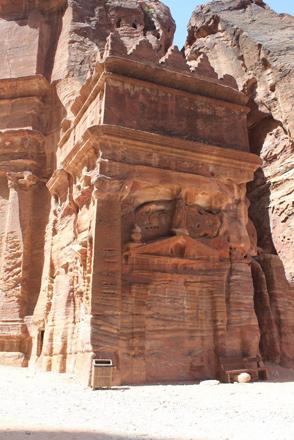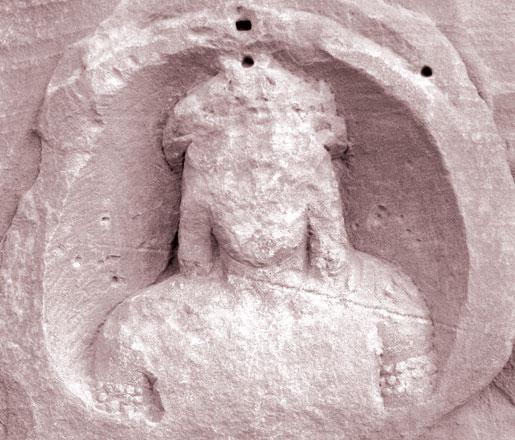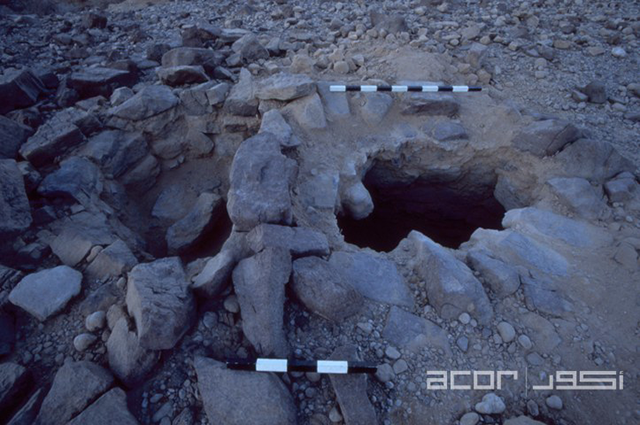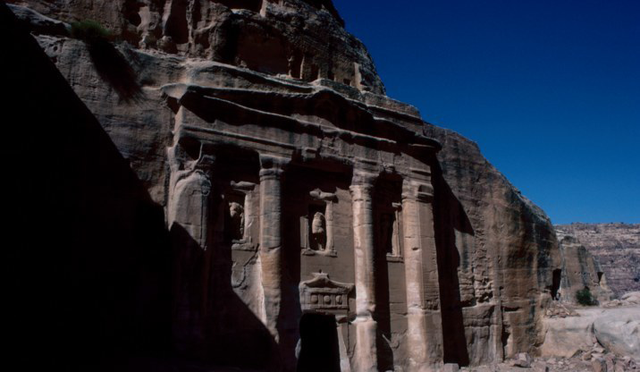You are here
Nabataeans’ expression of identity explored through Tomb 70
By Saeb Rawashdeh - Jun 18,2018 - Last updated at Jun 18,2018

Tomb 70 sits in a very important spot in Petra, where the Street of Façades widens into a broad avenue just before the theatre (Photo courtesy of Björn Anderson)
AMMAN — Tomb 70 in Petra represents an impressive, freestanding monolith structure that rises up to 15 metres and expands to 8-metres wide, an expert said.
"It is one of very few tombs in Petra with freestanding crenulations [a low wall between chest-height and head-height] atop the structure, and it sits in a very important spot, where the Street of Façades widens into a broad avenue just before the theatre," said Björn Anderson, who teaches at the University of Iowa.
There are two false entrances visible at ground level, but experts are not sure how deeply they continue below ground," he explained, noting that it would be "a very interesting question" to answer through excavations.
The American scholar has examined the tomb’s sculptural remains, focusing on the badly weathered sculpture atop the pediment that crowns the northern doorway.
He said that taking thousands of photographs of this sculpture from different angles would make it possible to use the Agisoft Photo Scan programme to derive a 3D model using photogrammetry. "In essence, this computes a three-dimensional surface by comparing slight differences in all these photos," he explained.
"The 3D model is important for two reasons: since the statue is high off the ground, it is difficult to study closely in the field; and the model can be manipulated to show different angles of light and shadow, which reveal details of the sculpture invisible to a naked eye," elaborated Anderson, whose work focuses primarily on the ways that art and architecture reflect identity.
More specifically, the American expert is interested in the reasons behind the Nabataeans' style choices and what it says about how they understood themselves and their place in the world.
He thinks that Tomb 70 must have been significant: “The construction of this monumental structure at such an important point along the road suggests that it must have been very significant; unlike the façade tombs, it is detached from the wall and really stands out on its own." For this reason, he believes that it deserves further exploration and hopes to excavate the entrance.
"I am continuing my work on how Nabataean art and architecture reflect the negotiation of identity, both at Petra and in the wider Nabataean kingdom. Tomb 70 is an interesting piece of the puzzle," Anderson concluded.
Related Articles
AMMAN — Orientalists R.
AMMAN — The Nabataean social structure revolved around the family, clan and tribe, and it can traced back the Nabataean nomadic past.
AMMAN — A funerary portrait serves as the lasting image through which the deceased hoped to be remembered by posterity for all eternit



















